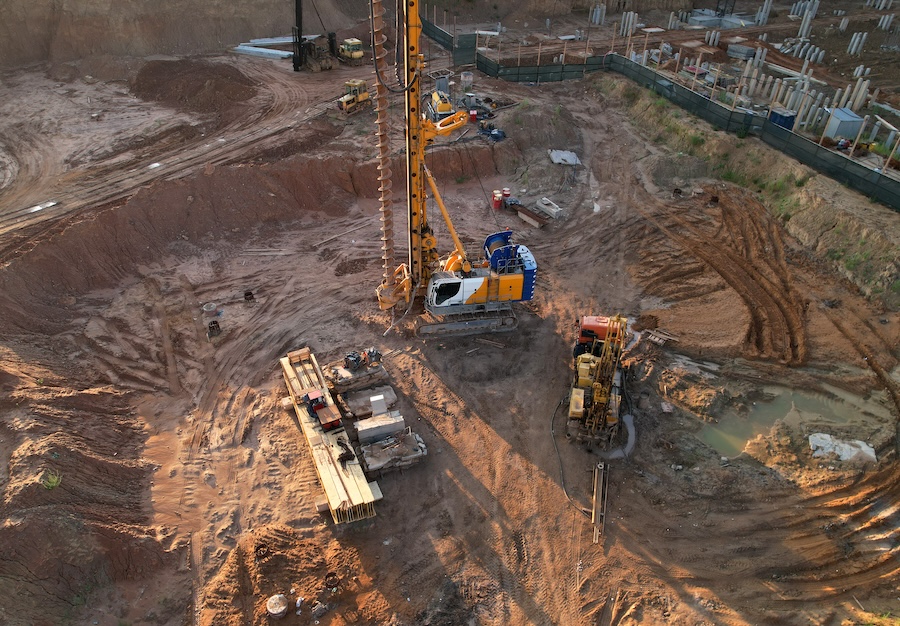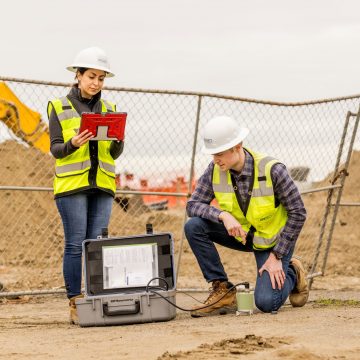The Role of an Engineer of Record in Ensuring Structural Integrity and Conformity
The Role of an Engineer of Record in Ensuring Structural Integrity and Conformity
Blog Article
Understanding the Vital Role of the Geotechnical Market in Modern Building And Construction Projects and Framework Development
The geotechnical industry is a keystone of modern building and facilities development, supplying vital understandings right into soil behavior that directly affect project end results. With advanced soil assessments and ingenious design solutions, geotechnical experts not only guarantee structural integrity yet likewise address sustainability concerns in the middle of evolving environmental requirements. As framework demands grow and brand-new difficulties emerge, the relevance of this field ends up being significantly apparent. What implications might these growths have for future tasks and the total security of our developed environment?
Relevance of Soil Assessment
Dirt assessment plays a crucial duty in the geotechnical industry, offering as the structure for educated decision-making in construction tasks. Exact dirt examination is important for establishing the suitability of a site for various kinds of structures, consisting of domestic homes, business buildings, and bridges. By examining soil structure, thickness, wetness, and strength content, engineers can anticipate prospective obstacles and minimize threats connected with ground instability, disintegration, and settlement.
The assessment procedure typically entails a collection of examinations and monitorings that offer important info concerning the subsurface conditions. This data informs the style and construction processes, ensuring that structures are built on solid ground with sufficient assistance. In addition, comprehending the soil account enables engineers to pick proper construction methods and products, optimizing resource utilization and lessening prices.
Along with guaranteeing structural integrity, soil analysis adds to ecological sustainability. By determining potential contamination or unfavorable results on bordering communities, engineers can execute approaches to safeguard these natural deposits. Generally, complete dirt assessment is important in the geotechnical field, underpinning the security, performance, and environmental duty of building jobs.
Trick Geotechnical Strategies
A variety of key geotechnical techniques are utilized to analyze and boost the security and efficiency of building and construction sites. One fundamental technique is dirt sampling and testing, which allows engineers to establish the chemical and physical residential properties of the ground. This information is crucial for making educated decisions pertaining to structure style and building techniques.
An additional important technique is site characterization, which entails the thorough assessment of soil and rock problems with methods such as borehole exploration and in-situ screening. Methods like Criterion Penetration Examinations (SPT) and Cone Penetration Examinations (CPT) supply useful data on dirt stamina and stratigraphy.
Ground improvement techniques, such as soil stabilization and grouting, are also vital in boosting the load-bearing ability of weak dirts. These approaches can alleviate negotiation and improve total website conditions.
Furthermore, incline security evaluation is crucial for recognizing potential landslide dangers and guaranteeing the safety of excavations. This evaluation frequently utilizes mathematical modeling and limitation stability methods to predict soil habits under various problems.
Integrating these geotechnical strategies right into construction preparation not only maximizes job outcomes yet additionally guarantees the long-term sustainability of framework development.
Influence On Building And Construction Safety

In addition, reliable geotechnical design involves carrying out mitigation approaches for determined risks. This may include dirt stablizing strategies, preserving structures, or useful link water drainage systems to reduce hydrostatic stress. By resolving these variables, construction groups can minimize the possibility of mishaps and enhance employee safety and security.
Furthermore, continuous monitoring of site problems is important during building. Geotechnical instruments can provide real-time information pertaining to ground movement and stability, enabling timely treatments when required.
Fundamentally, the geotechnical sector plays a crucial duty in securing construction jobs. By prioritizing ground honesty and using extensive evaluation approaches, the geotechnical field not just safeguards the labor force however additionally adds to the long life and dependability of built infrastructure.
Sustainability in Geotechnical Practices

Additionally, geotechnical engineers are now using advanced technologies, such as geosynthetics, which improve soil stability while minimizing the volume of product called for. This not only preserves sources yet additionally leads to much less waste generation (engineer of record). The integration of sustainable design concepts right into geotechnical design urges making use of sustainable energy resources in building and construction procedures, better minimizing carbon discharges
By carrying out these evaluations, geotechnical professionals can establish approaches that minimize negative impacts, ensuring conformity with ecological guidelines. In general, the emphasis on sustainability within geotechnical practices not just adds to the durability and durability of framework but also promotes a responsible method to land and source monitoring.
Future Trends in Geotechnical Design
Innovation is driving the future of geotechnical design, as arising techniques and innovations reshape the industry. The integration of sophisticated information analytics and expert system is established to transform website examination and risk assessment, allowing engineers to make even more educated decisions based upon real-time data. The usage of geosynthetic products is gaining grip, using lasting solutions that improve dirt security and decrease ecological impact - geo tech engineer.
An additional substantial pattern is the fostering of automated and robotic systems for monitoring and building and construction procedures. These technologies not just enhance precision however likewise boost safety and security by reducing human participation in dangerous atmospheres. Furthermore, the application of Building Information Modeling (BIM) in geotechnical style promotes enhanced collaboration amongst stakeholders, optimizing official website task delivery and decreasing prices.
As climate adjustment presents new obstacles, the industry is significantly focusing on strength and versatility in style techniques, making certain framework can withstand severe climate events. Ultimately, the continuous fad towards sustainability will certainly drive advancement in green products and approaches, lining up geotechnical engineering with broader ecological objectives. Collectively, these fads will form a much more effective, sustainable, and resilient geotechnical landscape for future tasks.
Conclusion

The geotechnical industry is a foundation of contemporary construction and framework development, offering crucial understandings into dirt behavior that directly affect task results. geo official source tech engineer.Dirt analysis plays an important function in the geotechnical sector, serving as the structure for informed decision-making in building tasks. In general, comprehensive dirt evaluation is indispensable in the geotechnical area, underpinning the safety, performance, and environmental duty of construction jobs
Building and construction security is considerably affected by geotechnical techniques, as the stability and stability of the ground straight influence the general safety and security of a building site.In final thought, the geotechnical market is crucial in modern-day building and construction and framework growth, supplying crucial evaluations that guarantee structural stability and safety.
Report this page